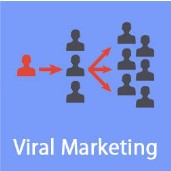Article marketing remains one of the most effective ways to build authority, drive traffic, and increase engagement. Despite the rise of social media, paid advertising, and influencer marketing, the art of writing and distributing high-quality articles continues to be a core strategy for businesses aiming to boost their online presence. If done correctly, article marketing can deliver long-lasting benefits, from improving search engine rankings to establishing credibility in your niche.
In this article, we will explore how to optimize your article marketing strategy for better results, with actionable steps and best practices.
1. Understanding Article Marketing and Its Benefits
Before delving into the specifics, it’s important to first understand what article marketing is. Essentially, article marketing involves writing informative, well-researched articles and publishing them on various platforms (e.g., blogs, content directories, or other websites). The goal is to provide value to readers while subtly promoting your brand, product, or service.
The benefits of article marketing include:
Improved SEO: Articles, when optimized for relevant keywords, help your website rank higher in search engines.
Brand Authority: Consistently publishing high-quality content helps build your credibility and position you as an expert in your field.
Increased Traffic: Articles that resonate with your target audience can drive organic traffic to your website.
Lead Generation: Well-crafted articles can convert readers into leads by including compelling calls-to-action (CTAs).
Cost-Effective: Compared to paid advertising, article marketing offers a relatively low-cost method for generating visibility and attracting potential customers.
2. Define Your Goals and Target Audience
Before you begin writing articles, it’s essential to define your objectives and understand your audience. Clear goals will help shape your content strategy and ensure that your efforts align with your business needs.
Setting Clear Objectives:
Increase Website Traffic: If your primary goal is to drive traffic, focus on creating content optimized for SEO that ranks well in search engines.
Build Brand Authority: To establish your business as an expert in your industry, create insightful, in-depth articles that address common pain points and provide valuable solutions.
Generate Leads: Craft content that speaks directly to your ideal customers, incorporates effective CTAs, and encourages readers to take the next step in their buyer journey.
Enhance Customer Engagement: For businesses seeking to engage existing customers, create content that encourages discussion, social sharing, and further exploration of your offerings.
Know Your Target Audience:
Your target audience should be at the forefront of your content creation process. Understanding who you are writing for will ensure that your articles are relevant and resonate with readers. Identify their:
Demographics: Age, gender, income level, education, and location.
Psychographics: Interests, values, lifestyle, and purchasing behavior.
Pain Points: The challenges or problems they are seeking solutions for.
Content Preferences: The type of content they consume most (e.g., how-to guides, case studies, opinion pieces, etc.).
Once you have a clear understanding of your audience, your articles will be better suited to address their needs and motivations.
3. Choosing the Right Topics
Selecting the right topics is one of the most important aspects of article marketing. Even the best-written articles will fall flat if they don’t cover topics that interest or benefit your target audience.
Here are some tips to help you choose the right topics:
Solve a Problem: Write articles that address common pain points or challenges your audience faces. Offering solutions will make your articles more valuable.
Stay Current: Focus on trending topics or emerging issues within your industry. This ensures that your content is timely and relevant.
Answer Common Questions: Research frequently asked questions in your industry and create content that answers them in detail. You can use tools like Google Keyword Planner, Quora, and Reddit to identify common queries.
Long-Tail Keywords: Consider targeting long-tail keywords—specific search phrases that are less competitive but still relevant to your audience. This will help you rank higher in search engine results.
4. Write Engaging and High-Quality Content
The quality of your content is what will ultimately determine its success. When it comes to article marketing, writing high-quality, engaging articles is crucial to attract and retain your audience. Here’s how to do it:
Craft Attention-Grabbing Headlines:
Your headline is the first thing readers will see, and it plays a significant role in whether or not they click on your article. A good headline should be:
Clear and Concise: Convey the topic and value of the article in a simple, straightforward way.
Compelling: Use curiosity or urgency to pique the reader’s interest (e.g., “5 Ways to Boost Your Sales with Article Marketing”).
Include Keywords: Incorporate your target keyword or a variation of it to improve SEO.
Write Valuable and Informative Content:
The core of article marketing is to provide value to your readers. Here’s how to ensure your content delivers:
Be Authentic and Authoritative: Share your knowledge, experience, and expertise. Readers trust content that feels credible and well-researched.
Provide Actionable Insights: Offer practical advice and actionable takeaways that readers can apply immediately.
Avoid Over-Promotion: While article marketing is about promoting your brand, it’s important not to overwhelm readers with sales pitches. Focus on educating them first and subtly integrating your offerings.
Format Your Content for Readability:
People tend to skim articles online, so making your content easy to read is essential. Here’s how:
Use Short Paragraphs: Break up long blocks of text to make your article more digestible.
Incorporate Headings and Subheadings: Organize your article into sections with clear headings that guide the reader through the content.
Use Bullet Points and Lists: Lists make it easy for readers to absorb key points quickly.
Include Images or Graphics: Visual elements can help clarify your message and break up the text, making your article more engaging.
5. Optimize Your Articles for SEO
Search engine optimization (SEO) is a critical component of article marketing. Without proper optimization, even the best-written articles may fail to rank well in search engines. Here’s how to optimize your articles for better visibility:
Keyword Research:
Start by identifying the keywords your target audience is searching for. Use tools like Google Keyword Planner, Ahrefs, or SEMrush to find relevant search terms. Once you’ve identified your primary keyword(s), integrate them naturally throughout your article, including in the headline, introduction, body, and conclusion.
On-Page SEO:
Meta Descriptions: Craft a compelling meta description that includes your main keyword. This summary appears in search engine results and can influence click-through rates.
Internal Linking: Link to other relevant articles or pages on your website to encourage readers to explore more content.
External Linking: Link to authoritative sources to provide additional value and increase your article’s credibility.
Alt Text for Images: Optimize the alt text for any images you use by including relevant keywords.
Mobile Optimization: Ensure your articles are mobile-friendly, as a significant amount of web traffic comes from mobile devices.
6. Distribute Your Articles Across Multiple Platforms
Once your article is written, the next step is to distribute it to the right platforms. Don’t just rely on your website or blog; expand your reach by publishing your content across various channels. Consider these options:
Content Directories:
Submit your articles to content directories like EzineArticles or Medium. These platforms already have established audiences and can help drive traffic to your website.
Guest Blogging:
Write guest posts for other blogs in your niche. This can help you reach a wider audience and establish yourself as an authority in your field.
Social Media:
Share your articles on social media platforms like Facebook, LinkedIn, Twitter, and Instagram. Tailor your message to fit the platform’s format and audience.
Email Newsletters:
If you have an email list, send your articles directly to your subscribers. Articles in newsletters can keep your audience engaged and provide a consistent stream of value.
7. Measure and Optimize Your Results
To improve your article marketing efforts, it’s important to measure the results of your campaigns and continuously optimize your approach. Key performance indicators (KPIs) to track include:
Traffic: Monitor how much traffic your articles are driving to your website.
Engagement: Track metrics like time on page, bounce rate, and social shares.
Conversions: Measure how many leads or sales are generated from your articles.
Rankings: Track how your articles rank for targeted keywords over time.
Use this data to adjust your strategy, tweak your content, and refine your promotional efforts to maximize results.
Article marketing remains a powerful tool in the digital marketing landscape, providing businesses with a cost-effective way to build authority, drive traffic, and generate leads. By following the best practices outlined in this article—defining clear goals, targeting the right audience, creating high-quality content, optimizing for SEO, and distributing your articles strategically—you can significantly improve the results of your article marketing efforts.
Remember, article marketing is not a one-time endeavor; it requires consistency and dedication. By continuously producing valuable content and refining your approach, you can reap long-term benefits that drive sustained growth for your business.




